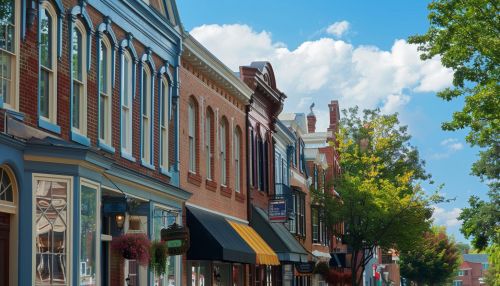Historic Districts
Introduction
A Historic District is a section of a city which contains older buildings considered valuable for historical or architectural reasons. In some countries, historic districts receive legal protection from development and demolition. While they can be found in urban or rural areas, they share the commonality of being geographically definable as a distinct entity.
Definition and Overview
Historic districts are defined as geographically definable areas, urban or rural, possessing a significant concentration, linkage, or continuity of sites, buildings, structures, or objects united historically or aesthetically by plan or physical development. These districts often reflect the cultural and social history of the area and are typically identified by the local or national government as places of historical significance.
History and Evolution
The concept of historic districts is not a new one. In fact, it has been a part of urban planning and preservation efforts for centuries. The first recorded historic district was in Charleston, South Carolina, in 1931. Since then, the concept has spread across the United States and around the world, with thousands of historic districts now recognized and protected.
Significance and Importance
Historic districts are significant for a variety of reasons. They often represent a physical manifestation of a community's history, reflecting the architectural styles, economic trends, and social norms of different periods. They also contribute to a sense of place and continuity, providing a tangible link to the past. In addition, historic districts can have economic benefits, as they often attract tourists and can increase property values.
Types of Historic Districts
There are several types of historic districts, including National Historic Landmarks, National Register Historic Districts, and Local Historic Districts. National Historic Landmarks are nationally significant historic places designated by the Secretary of the Interior because they possess exceptional value or quality in illustrating or interpreting the heritage of the United States. National Register Historic Districts are areas of historic or architectural significance at the national, state, or local level. Local Historic Districts are designated by local municipalities and often have more stringent preservation regulations.
Preservation and Management
The preservation and management of historic districts involve a complex set of challenges and responsibilities. This includes maintaining the architectural integrity of the buildings, ensuring the preservation of the district's historical significance, and balancing the needs of residents and businesses. Preservation efforts often involve a combination of government regulation, private investment, and community involvement.
Challenges and Controversies
While historic districts are generally seen as beneficial, they are not without controversy. Some critics argue that they can lead to gentrification, as property values in these areas often rise, potentially displacing lower-income residents. Others contend that the restrictions placed on property owners in historic districts can be overly burdensome. Despite these challenges, many believe that the benefits of historic districts outweigh the drawbacks.
Future of Historic Districts
The future of historic districts is uncertain. As cities continue to grow and change, the pressure to develop these areas will likely increase. However, the importance of preserving our historical and architectural heritage is also widely recognized. As such, the challenge will be finding ways to balance these competing interests.
See Also


